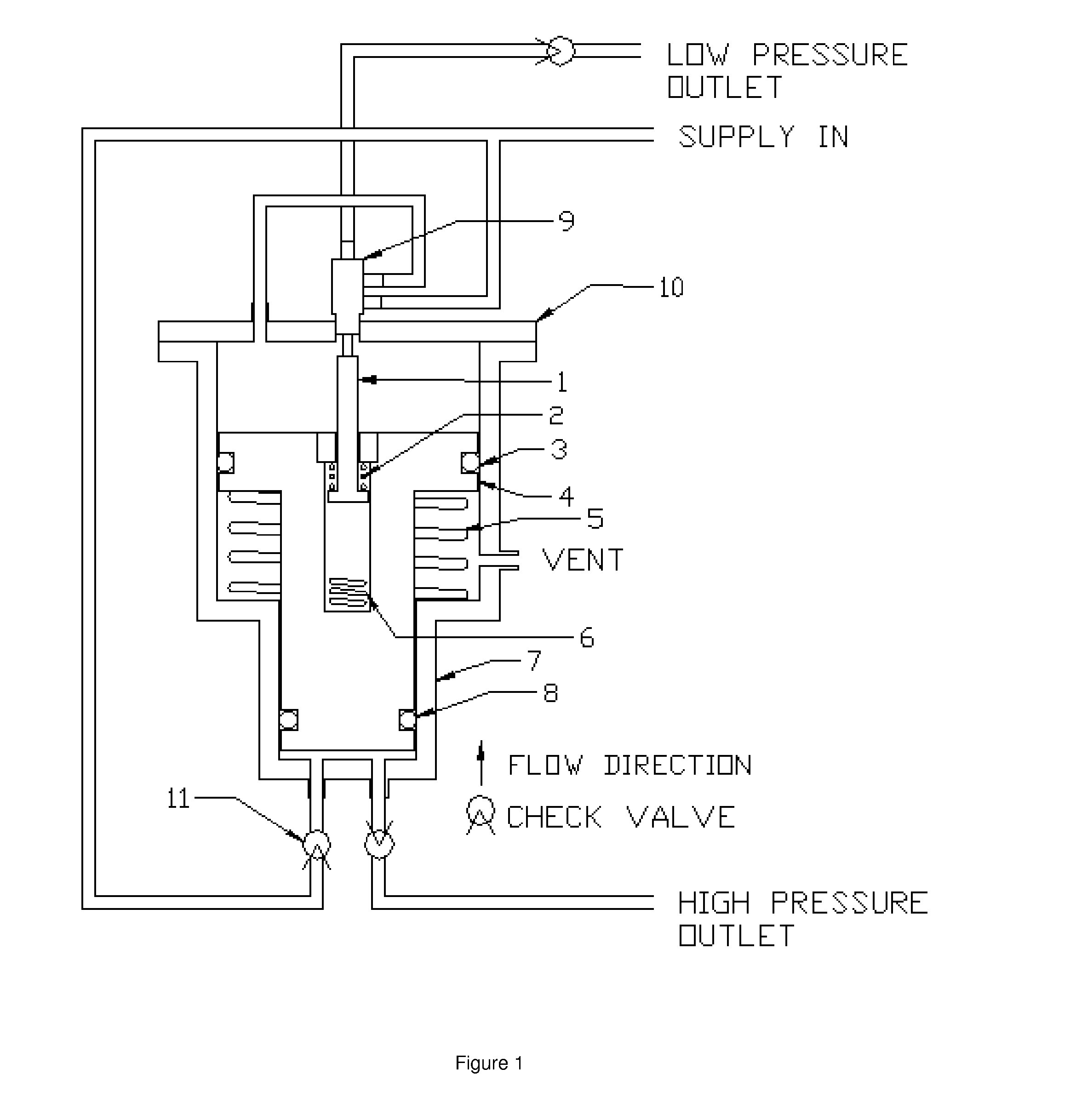Gas Pressure Intensifier System for use with a Ventilator or Resuscitator
a gas pressure intensifier and ventilator technology, which is applied in the direction of respirator, operating means/releasing devices of valves, therapy, etc., can solve the problems of no known pressure intensifier system, reduce component operating temperature and gas stream temperature, reduce the temperature of high pressure gas stream, and reduce the operating temperature and pressure of chemical oxygen generating sources
- Summary
- Abstract
- Description
- Claims
- Application Information
AI Technical Summary
Benefits of technology
Problems solved by technology
Method used
Image
Examples
Embodiment Construction
[0049]FIG. 1 shows the basic pneumatic circuit for the pressure piston type intensifier. FIG. 1 is a sectional view of the intensifier. In this particular design the intensifier uses two different piston diameters, item 3, and a cylinder, item 7, to produce a gas of higher pressure than the supply pressure. Items 3 and 8 are seals to separate gas pressures in the three chambers of the intensifier assembly. Item 1 is the flow control actuator rod; it changes the position of the 3 port valve, item 9. The control actuator rod is moved by the springs, items 2 and 6. When the piston, item 4, moves to the bottom of the cylinder the actuator rod moves pulling the 3 port valve, item 9, into a new position stopping the flow of supply gas into the large chamber and allowing the gas there to escape to the low pressure circuit. The check valves, item 11, allow the flow of gas in only one direction. Item 5 is a spring strong enough to overcome the friction of the intensifier assembly ensuring wh...
PUM
 Login to View More
Login to View More Abstract
Description
Claims
Application Information
 Login to View More
Login to View More - R&D
- Intellectual Property
- Life Sciences
- Materials
- Tech Scout
- Unparalleled Data Quality
- Higher Quality Content
- 60% Fewer Hallucinations
Browse by: Latest US Patents, China's latest patents, Technical Efficacy Thesaurus, Application Domain, Technology Topic, Popular Technical Reports.
© 2025 PatSnap. All rights reserved.Legal|Privacy policy|Modern Slavery Act Transparency Statement|Sitemap|About US| Contact US: help@patsnap.com



